|
Do red giants really look like they do in SpaceEngine?
|
|
| apenpaap | Date: Sunday, 01.07.2012, 01:56 | Message # 1 |
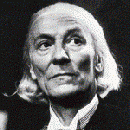 World Builder
Group: Users
 Antarctica
Antarctica
Messages: 1063
Status: Offline
| The red giants in SpaceEngine have a rather unique, disturbing look about them. I'm of course referring to how bizarrely bulgy their surface is, with these large nasty-looking blobs on them. My guess is that the reason SE makes the red giants look like this is because their low surface gravity would presumably really give them large differences in height... But is this effect overdone in SE to make them look extra disturbing and very clearly dying? Surely the bulges wouldn't be as large as a quarter of the star's radius in reality? The red giants make quite a lot of asteroids look regular and spherical by comparison.
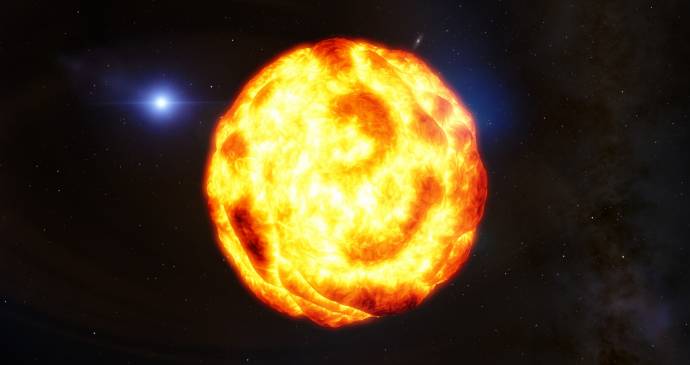
A second. similar question is not about red giants in specific, but really all M stars. When real Sun brightness is turned on, these stars are still displayed normally on the screen, with a surface brightness similar to the dayside of a planet. Would this really be what you'd see if you were close to a red giant or red dwarf? Would you really see the star's surface easily with the naked eye, instead of as a painfully bright ball of whiteness like the Sun looks like? (assuming you were behind some kind of filter to get rid of ultraviolet and other harmful radiation, leaving only visible light)
I occasionally stream at http://www.twitch.tv/magistermystax. Sometimes SE, sometimes other games.
Edited by apenpaap - Tuesday, 26.03.2013, 12:06 |
| |
| |
| HarbingerDawn | Date: Sunday, 01.07.2012, 02:59 | Message # 2 |
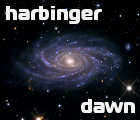 Cosmic Curator
Group: Administrators
 United States
United States
Messages: 8717
Status: Offline
| Every star is different in reality of course, but large red giant stars are thought to possibly posses enormous convection cells which would lead to a churning, uneven surface that could change radically in its appearance and size. This could help explain the unusually high mass loss rates of such stars. Take Betelgeuse as an example: http://en.wikipedia.org/wiki/Betelgeuse#Circumstellar_dynamics
Cool red stars would appear dimmer than the Sun because so little of their energy output is in the optical/visible light spectrum. But they would probably still be too bright to see any detail fine on with the unaided eye. Any large contrasting regions such as large sunspots could possibly be apparent however.
All forum users, please read this!
My SE mods and addons
Phenom II X6 1090T 3.2 GHz, 16 GB DDR3 RAM, GTX 970 3584 MB VRAM
|
| |
| |
| apenpaap | Date: Sunday, 01.07.2012, 10:44 | Message # 3 |
 World Builder
Group: Users
 Antarctica
Antarctica
Messages: 1063
Status: Offline
| Wow, so it seems SpaceEngine's depiction is actually rather downplayed; :O they mention the bubbles can get as large as the star's radius in the link. And the active bubbling around and up and down of the star would only make it look more disturbing. I really hope to see that in a later version of SE... I guess we might see it once seasonal changes, dynamic clouds, and other such changing textures are in.
Ah, so they'd look more like late orange dwarfs look like in SE, mostly overexposed, but with visible sunspots and granulation somewhat visible at the edge of the star's disc?
I occasionally stream at http://www.twitch.tv/magistermystax. Sometimes SE, sometimes other games.
|
| |
| |
| HarbingerDawn | Date: Sunday, 01.07.2012, 10:51 | Message # 4 |
 Cosmic Curator
Group: Administrators
 United States
United States
Messages: 8717
Status: Offline
| Quote (apenpaap) Ah, so they'd look more like late orange dwarfs look like in SE, mostly overexposed, but with visible sunspots and granulation somewhat visible at the edge of the star's disc?
I'm not sure it's as clear cut as that, since HDR rendering in video games is still not a perfect simulation of human eye perception, but it could be something like that, at least for the sunspots. I doubt whether granulation could be visible to the naked eye. Having never traveled to an M-star system, I couldn't verify it for you 
(Normally I would give a better answer, but it is 5:50 here and I am tired and should go to sleep)
All forum users, please read this!
My SE mods and addons
Phenom II X6 1090T 3.2 GHz, 16 GB DDR3 RAM, GTX 970 3584 MB VRAM
|
| |
| |
| SpaceEngineer | Date: Monday, 02.07.2012, 04:32 | Message # 5 |
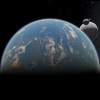 Author of Space Engine
Group: Administrators
 Russian Federation
Russian Federation
Messages: 4800
Status: Offline
| I have already explain the shape of red giants on the Russian forum: http://spaceengine.org/forum/21-44-1
There are a few links at the end of my post - follow them and download the video showing numerical computation models of red giants.
I thought I gave these links somewhere here on the English forum.
*

|
| |
| |
| Talisman | Date: Monday, 02.07.2012, 15:46 | Message # 6 |
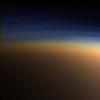 Pioneer
Group: Users
 United States
United States
Messages: 409
Status: Offline
| Quote (SpaceEngineer) I thought I gave these links somewhere here on the English forum.
Yes, I remember seeing them, I don't have the link anymore, but it's quite impressive. 

|
| |
| |
| SpaceEngineer | Date: Wednesday, 04.07.2012, 09:24 | Message # 7 |
 Author of Space Engine
Group: Administrators
 Russian Federation
Russian Federation
Messages: 4800
Status: Offline
| Red giants looks very similar to fireball:

|
| |
| |
| Joey_Penguin | Date: Thursday, 05.07.2012, 18:51 | Message # 8 |
 Pioneer
Group: Users
 United States
United States
Messages: 311
Status: Offline
| What about the star in http://en.spaceengine.org/forum/10-436-1#3614 ?
Careful. The PLATT Collective has spurs.
|
| |
| |
| fxmodels | Date: Sunday, 08.07.2012, 21:15 | Message # 9 |
|
Observer
Group: Newbies
 United States
United States
Messages: 5
Status: Offline
| When you head to a red giant star or any kind of giant star, the texture is not that of a round star. its an object that shows as a blobby roundish looking thing. Is there a way to fix the textures so we see a realistic round star?
Thanks,
Marc
|
| |
| |
| Talyn | Date: Sunday, 08.07.2012, 21:23 | Message # 10 |
 Explorer
Group: Users
 Portugal
Portugal
Messages: 207
Status: Offline
| Welcome to the forum fxmodels, but you should read the rules before posting questions like that.
It's not a BUG, in fact according to SpaceEngineer, that kind of stars look a lot like a giant explosion.
Use the search function and try to read some threads 
And above all, have fun exploring 
PC: Intel Core2Duo E6850 @ 3.00 GHz & 4GB DDR3 @ 1333 - NVIDIA GeForce 8800 GTS with 640 MB VRAM
Laptop: Intel Core2Duo T9400 @ 2.53 GHz & 4 GB DDR @ 1066 - NVIDIA GeForce 9600M GT
|
| |
| |
| siriusd | Date: Sunday, 08.07.2012, 23:05 | Message # 11 |
 Space Tourist
Group: Users
 Canada
Canada
Messages: 21
Status: Offline
| Talyn is right - it's not a bug. That, according to SpaceEngineer, is what giant stars actually look like. You may wish to read about giant stars here: Wikipedia: Giant Stars
|
| |
| |
| fxmodels | Date: Sunday, 08.07.2012, 23:07 | Message # 12 |
|
Observer
Group: Newbies
 United States
United States
Messages: 5
Status: Offline
| Quote (Talyn) It's not a BUG, in fact according to SpaceEngineer, that kind of stars look a lot like a giant explosion.
Use the search function and try to read some threads wink
Hi Talyn,
Thanks for responding. I am not sure what you meant by I should read the forum rules before posting a question... Did I put the comment in the wrong forum? If so I apologize I meant no harm...
Regarding the star shape... I understand that its not a bug now. But it is actually quite an incorrect rendering of these types of stars.
I understand how people can become confused with what Red giant stars and giants in general look like. I have spent 40 years in Astronomy which I obtained a degree in and red giant stars do not look like SpaceEngine's rendering at all.
I can understand SpaceEngineer's confusion though and I am happy to correct it to help better the SpaceEngine software as I like it very much.
Here is some information that will be helpful: Red Giant stars eventually blow off their outer layers and form planetary nebulae, which look irregular and have glowing tendrils of gas like you see in the nebulae in SpaceEngine, but the gas that is blown off of a star is very transparent and you can clearly see the very round star in the middle. The correct understanding here is that the star itself always looks like a star even as it becomes a white dwarf after its all said and done. It might be good to have a planetary nebula created for those stars that have them. But, not all red giants have them. Betelgeuse in Orion is a big round red star whose size would put it past Earth's orbit. Antares is the same in Scorpius. Its diameter would put it past Mars if it was placed at the Sun's location.
It would not be incorrect to show these as red stars sitting WITHIN a reddish nebula surrounding them. this in fact would be a terrific way to show the correct situation.
thanks,
I am just trying to help better a great product.
Marc
|
| |
| |
| Talyn | Date: Sunday, 08.07.2012, 23:14 | Message # 13 |
 Explorer
Group: Users
 Portugal
Portugal
Messages: 207
Status: Offline
| Quote (fxmodels) Did I put the comment in the wrong forum?
We usually ask all our new members to read them, and in your case, that question in particular has already been asked and answered several times in a number of threads, hence my suggestion to use the search funcion 
SpaceEngine is still in BETA and for that reason many extreme objects are not correctly depicted yet.
As an example, You will notice that many stars should not be so bright because the dust surrounding them is not yet correctly modeled 
PC: Intel Core2Duo E6850 @ 3.00 GHz & 4GB DDR3 @ 1333 - NVIDIA GeForce 8800 GTS with 640 MB VRAM
Laptop: Intel Core2Duo T9400 @ 2.53 GHz & 4 GB DDR @ 1066 - NVIDIA GeForce 9600M GT
Edited by Talyn - Sunday, 08.07.2012, 23:15 |
| |
| |
| fxmodels | Date: Sunday, 08.07.2012, 23:21 | Message # 14 |
|
Observer
Group: Newbies
 United States
United States
Messages: 5
Status: Offline
| Quote (siriusd) Talyn is right - it's not a bug. That, according to SpaceEngineer, is what giant stars actually look like. You may wish to read about giant stars here: Wikipedia: Giant Stars
Hi... I have seen that entry and many others ... I truly mean no disrespect but I am sorry but the rendering is incorrect. Stars are subject to Hydrostatic Equilibrium which generates a spherical shape. Even as a star begins to slough off its outer atmosphere and enter a planetary nebula stage it will still look spherical. This never changes. There are prominences and flares but these are localized, transparent events.
So that was my reasoning for trying to be helpful...
Sorry it seems I have stirred things up without intending to do so...
Marc
|
| |
| |
| fxmodels | Date: Sunday, 08.07.2012, 23:24 | Message # 15 |
|
Observer
Group: Newbies
 United States
United States
Messages: 5
Status: Offline
| Quote (Talyn) We usually ask all our new members to read them, and in your case, that question in particular has already been asked and answered several times in a number of threads, hence my suggestion to use the search funcion wink
SpaceEngine is still in BETA and for that reason many extreme objects are not correctly depicted yet.
As an example, You will notice that many stars should not be so bright because the dust surrounding them is not yet correctly modeled smile
I understand and did read the rules just so it is clear. The only issue was that two people so far told me that this was the correct depiction for these stars and it isnt so I wanted to make sure that this was covered in the to-do list for the beta...
Its all good. I like the program quite a lot.
Marc
|
| |
| |